Workation » Best Workation Locations and Why You Should Visit Them » Italy Workation – Working and Vacationing in Italy » Regions of Italy and Where to Visit
The Differences of Italy’s North, Central, and South
Italy can feel more like a collection of disparate regions than a united republic and you can enjoy an immersive visit to the different regions during your Italy Workation package.
The different dialects dependent upon the region of Italy best demonstrates the diverse cultures across the country. The dialect of Tuscany was popularized by Dante Alighieri’s 14th century epic poem La Divina Comedia, The Divine Comedy. Sicily’s dialect is so strong that Italians from other areas of the country have trouble understanding due to a long influence of Arabic, Greek, and Spanish languages on the island.
Groups along the northern border of France speak with an accent heavily influenced by a history of French occupation, along with the fluidity of the border connecting republics to the French monarchy. German is also spoken with prevalence in the mountains along the Swiss and Austrian borders due to deep border connection with former German-speaking monarchies and the occupation of eastern Italy by the Austro-Hungarian Empire.
Italian politicians create passion by stressing ties to loyalty to the family and the country’s rich collective history but our list of Italy’s different regions share the individual personalities you may find in the North, Center, and South during your Workation.
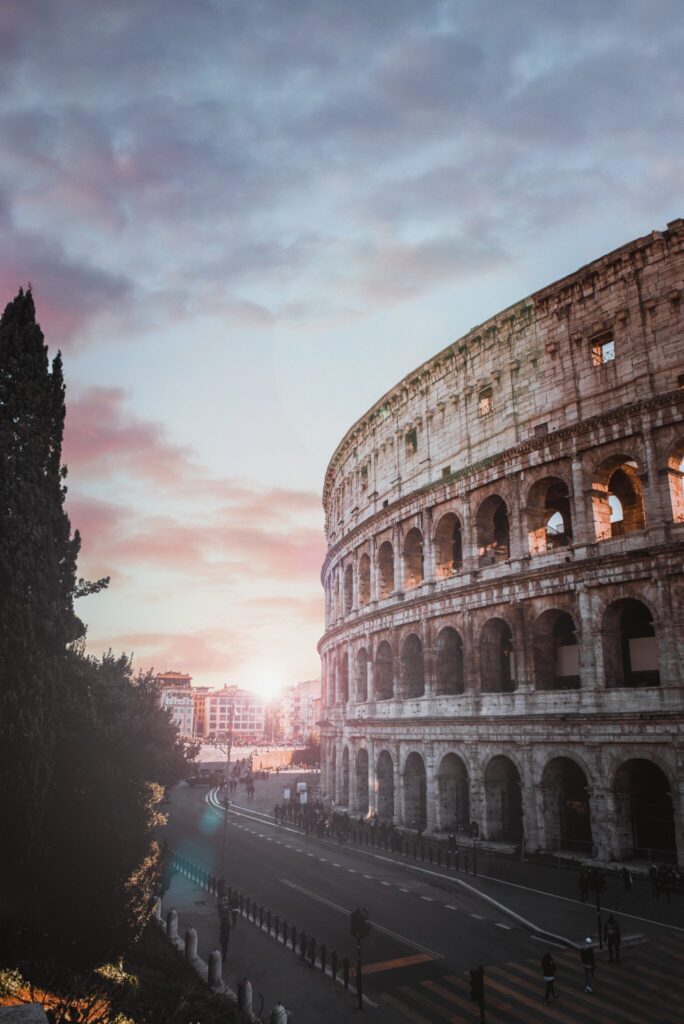
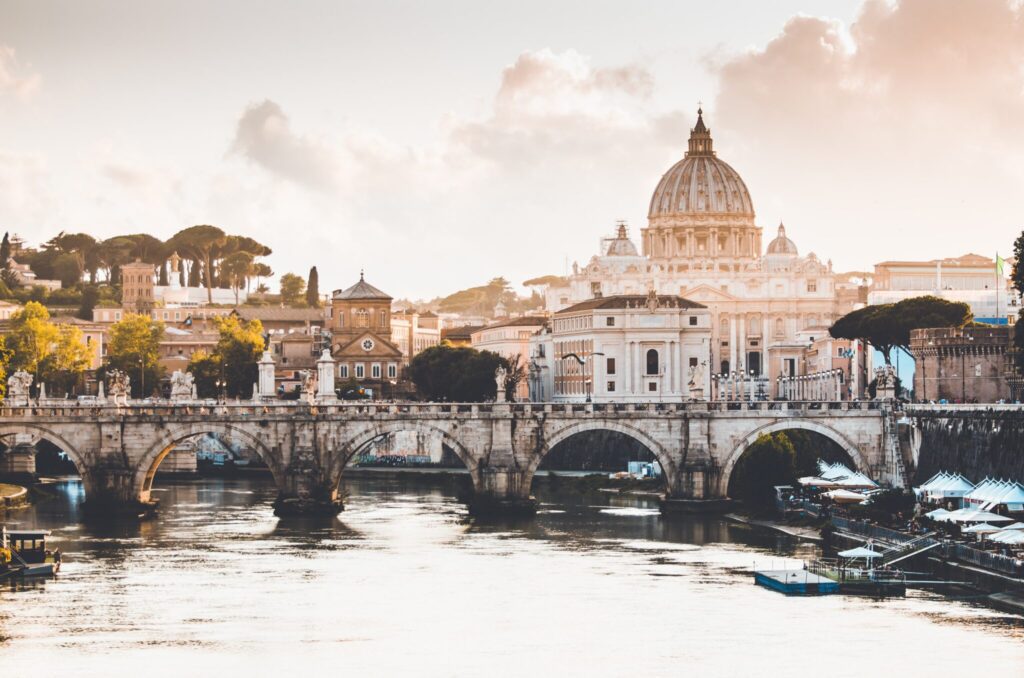
Why Visit Northern Italy
Northern Italy is fashionable and romantic, home to Venice and the Italian Riviera, along with an abundance of medieval and Renaissance castles. Historic independent city-states developed into modern cities and retained a sense of their seasoned majesty in the preserved architecture, streets, culture, and cuisine. The northern regions led the movement for independence in the 19th century, which unified Italy. The climate is more continental in nature, with cold winters and wet springs.
Fashion is an important aspect of daily life in northern Italy stemming from the connection of the industry with the chic styles of Milan. Sporadic Roman ruins lead to cathedrals brimming with gorgeous mosaics. Hill town overlooks lush vineyards producing distinctive wines while hidden local restaurants receive international accolades, such as Michelin star ratings. Renaissance villas adorn the shores of stunning lakes, alpine lakes and trails connect secluded towns over in view of the Mediterranean Sea.
The northern states are more industrialized and urbanized than the south. The cities of Milan, which is known for its fashion, Turin, which was the first capital of a unified Italy, and Genoa, which remains the most important port in the entire country, embody the contemporary culture and industrialization of Italy during and post the Second World War.
Italians from the south and central regions flocked north for jobs in the “Industrial Triangle,” breeding resentment from locals of the larger cities and a boom to the populations. An undertone of animosity remains in the urbanized areas against those in the south, including residents whose families once migrated for work.
Northern Italian cuisine features less pasta than in the south, however, the grain is not absent from traditional regional dishes. The egg-based pastas of Emilia-Romagna have inspired tortellini and lasagna. The states farther north rely mainly on risotto and polenta due to the ease with which the regions have historically produced rice as opposed to wheat.
Tomatoes are not as prevalent in the dishes of the north but make appearances in the hardy meat-based sauce of Ragu alla Bolognese and minestrone soup.
Northern Italian cuisine features less pasta than in the south, however, the grain is not absent from traditional regional dishes. The egg-based pastas of Emilia-Romagna have inspired tortellini and lasagna. The states farther north rely mainly on risotto and polenta due to the ease with which the regions have historically produced rice as opposed to wheat.
Tomatoes are not as prevalent in the dishes of the north but make appearances in the hardy meat-based sauce of Ragu alla Bolognese and minestrone soup.
The regions of Northern Italy are:
- Veneto
- Trentino-Alto Adige
- Friuli-Venezia Giulia
- Emilia-Romagna
- Piedmont
- Liguria
- Lombardy
- Valle d’Aosta
Why Visit Central Italy
Central Italy is home to the notable cities of Rome, Florence, and Assisi, each located in their respective states of Lazio, Tuscany, and Umbria. Medieval towns crown lush hills and ancient villas adorn mountain ridges. The countryside provides views of grazing sheep, towering cypress trees, and the occasional palm tree. History dates beyond the Roman empire featuring tombs and artifacts from the Etruscans. Traditional gardens embody the prestige of aristocratic villas, while Umbria retains a sense of purity through undiscovered medieval villages providing grand views, serene cobbled lanes, and preserved heritage.
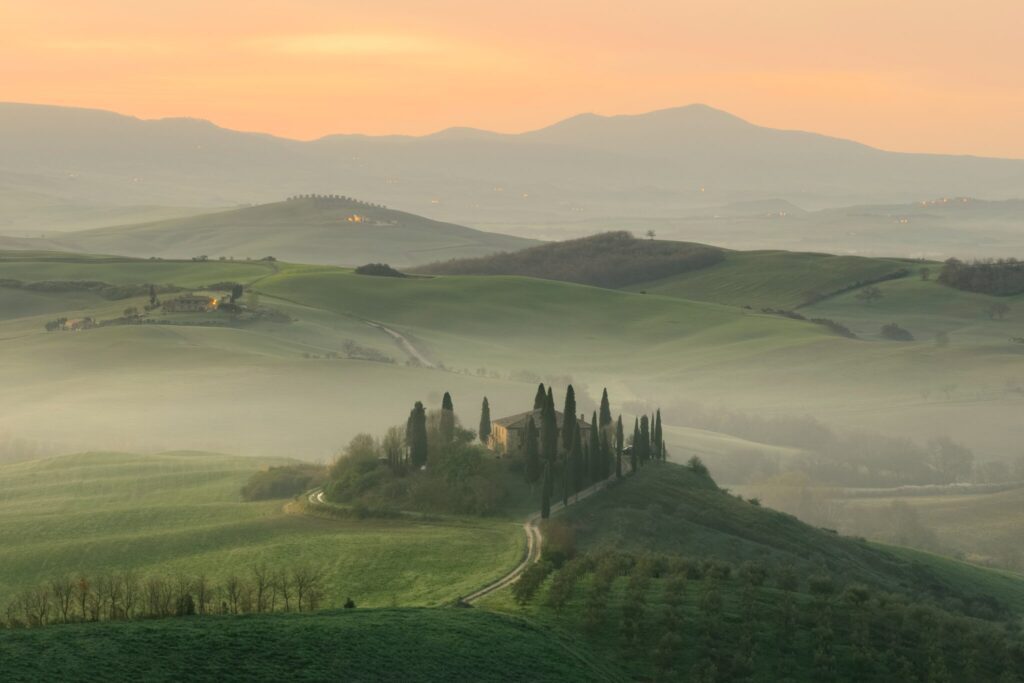
The culture of Central Italy runs deep, embodied in the ruins decorating Rome and the surrounding countryside of Lazio, along with the abundance of artwork and Renaissance history populating the museums and streets in the historic city center of Florence. Small and historic buildings retain a connection to their origins with elegant facades and dramatic interiors now housing cafes and restaurants, churches or hotels. Public squares host markets and festivals or nightly congregations of university students enjoying time away from their studies.
Central Italy is often connected more with Northern or Southern Italy in terms of cuisine and culture, with Rome considered the dividing line between the two distinctive regions. The cuisine of Central Italy is different from those of the north and south, blending the traditions of the kitchen with local ingredients and custom, notably bringing the family together around the table on Sunday evenings.
Gnocchi is a popular substitution for pasta in Central Italian dishes, with the certain recipes crafting the dumplings out of semolina as opposed to potato. Tuscany is also known for its remarkable T-bone steak, bistecca alla Fiorentina, made from prized Chianina cattle and cooked over a wood fire. While Northern Italy chooses to use butter in the French and Germanic traditions, Central Italy prefers the sensual flavors of extra virgin olive oil when cooking, marinating, or dressing their cuisine.
The regions of Central Italy are:
- Le Marche
- Lazio
- Tuscany
- Umbria
- Abruzzo
Why Visit Southern Italy
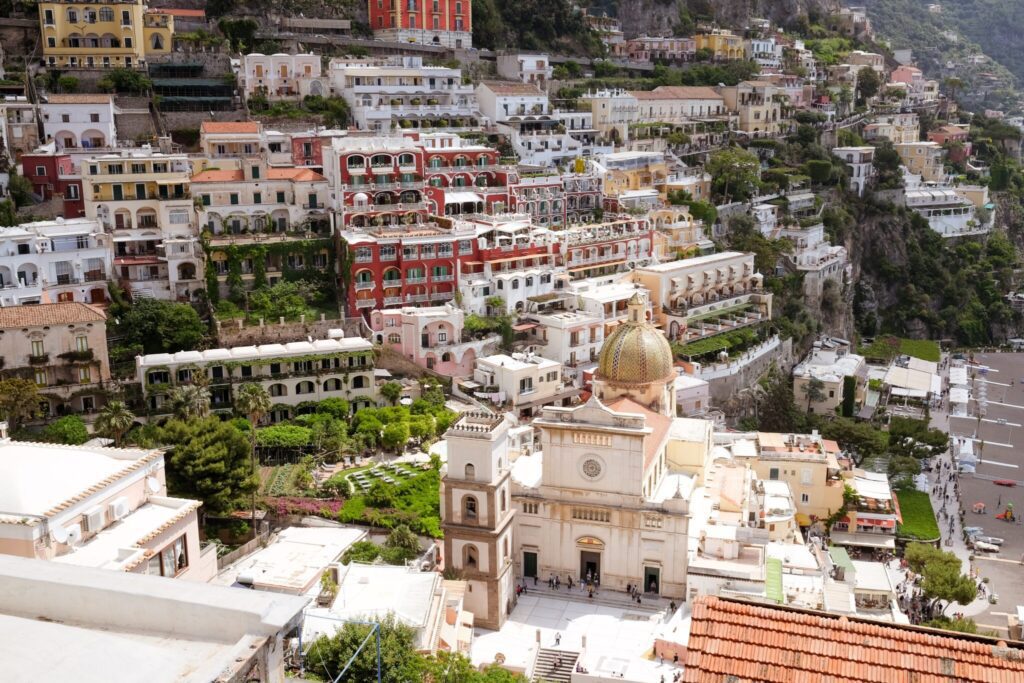
Southern Italy represents ancient history beyond that of Rome and draws visitors from around the country and the globe with enchanting coastline, delicious cuisine, and unique culture shaped by a history of Greek, Roman, Norman, Arab, and Spanish occupation. The city of Pompeii demonstrates the daily life of Roman citizens around the Bay of Naples. The Greek temple at Segesta represents the largest Hellenistic temple in Italy, which was erected in the 5th century BC.
Southern Italy hosts pastoral mountains and idyllic shorelines, chaotic historic streets promoting a fast-paced contemporary culture contrasting the relaxed pace of seaside towns filled with quiet cafes. Southern Italians often linger in the public piazzas debating current events or sports while sipping espresso amidst baroque and medieval architecture. The city of Lecce embodies stunning architecture and the creativity of artists in history who didn’t have the materials to sculpt, and instead dedicated their talents to creating elegant figures out of paper-mâché.
The cuisine of Southern Italy has permeated Northern Italian culinary traditions and is most often the dishes associated with Italian food in the United States, United Kingdom, Canada, Australia, and New Zealand. Southern Italian cuisine is more rustic, utilizing ingredients necessary to survive in the conventional Mediterranean climate with ingredients like tomatoes, olives, and garlic.
Pasta is the base of a large selection of regional dishes, along with polenta, which was once considered a “poor person’s” grain. The spices of the region are consistent with seasonings around the Mediterranean areas of Greece, Spain, and North Africa featuring red pepper, anise, nutmeg, and sea salt. Southern Italy also produces a variety of cheeses, including the popular Italian delicacies of buffalo mozzarella and burrata.
Southern Italy has a more traditional ambiance in the towns, villages, and cities offering a glimpse into unchanged traditions including an economy based on agriculture, as opposed to the industry-based economy of the north. With the absence of major industry shifting the culture of the region, customs have continued in daily life, along with a sense of an unmoving present, which culminates in animosity towards Northern Italy. The south feels northerners live fast-paced lives focused on work, but believe their relaxed pace affords them a deeper connection with the life’s pleasures, including, but not limited to, an espresso and good conversation.
The regions of Southern Italy are:
- Abruzzo
- Puglia
- Basilicata
- Calabria
- Campania
- Molise
Popular Destinations
Rome
Rome is one of Italy’s most famous cities. It has stood for millennia as a beacon of the divine, a stage depicting Western Europe’s ancient history, and a brutal representation of the past. The historical sites carry as much drama and vibrancy as the contemporary shops and restaurants. The streets capture the enchanting chaos of the capital city’s politics and commerce, as well as the mixture of Catholicism and the former empire. Ancient monuments, medieval churches, and baroque fountains decorate the streets and squares. Opulent Renaissance palaces and museums contain artworks traversing thousands of years, indicative of the shifting aesthetics through time, and the extravagant tastes of the aristocratic patrons of the arts.
Rome reveals layers bustling with modern life, active nights and excellent restaurants, and a fast but welcoming pace set by locals. The city also provides easy access to the grandest Catholic church in the world, St. Peter’s Basilica in Vatican City. Find icons of the Christian faith, elaborate maps of the lives of ancient Romans, landmarks of Italian artistry, or the political heart of a country whose citizens actively and energetically discuss politics. The city is so large, it can feel overwhelming at first, with too many monuments, masterpieces, and famous ruins.
Rome sees an abundance of tourists each year, making it the third most visited city in Europe. The Colosseum alone receives upwards of 6 million visitors each year, with Vatican City reaching more than 5 million visitors a year. With famous places always attractive to visitors from around the world, Italy also has quieter towns and over-looked corners portraying the equally fascinating charms found across the country.
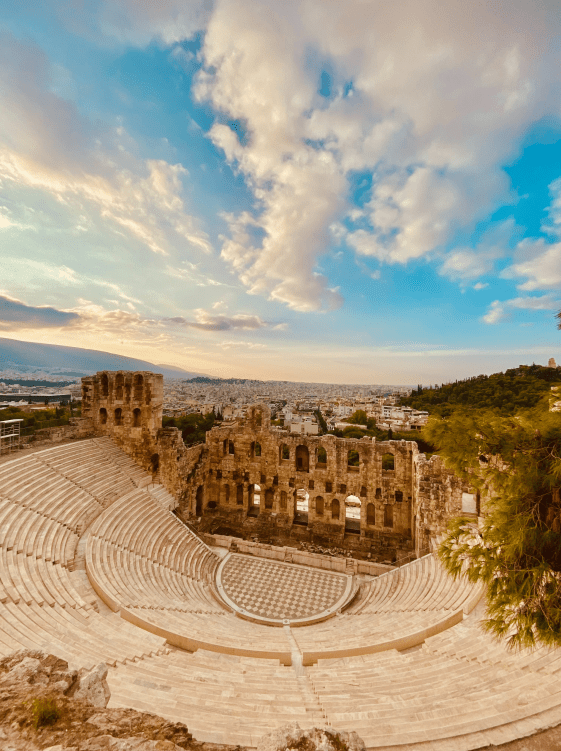

Avoid the Major Pitfall of Rome
Rome is an open-air museum that has you wander through the streets fully immersed in the drama and excitement of the city and empire’s history. Full immersion means viewing and experiencing more of the city than you initially expected. Discover sites, sounds, and flavors you never intended to find, replacing your expectation with an overabundance of things to see and do, requiring you to focus your limited time to avoid the pitfalls of many travelers who visit the Eternal City, who arrive with an itinerary that’s too stuffed full of activities within too short of a timeframe.
People try to see and do too many things during their time in Rome. The rhythm of the best visits to the capital of Italy provides a blend of activity and downtime. Discover the culture in the daily life of modern Romans, who live alongside the elaborate history.
Spend at least three days in Rome, if not more, for a full sense of the city’s remarkable history, elaborate sights, and ineffable atmosphere. Remember, Rome wasn’t built in a day, which means it will take much longer to see all the wonders of the empire, medieval stronghold, and the Christian world’s religious heart.
Florence
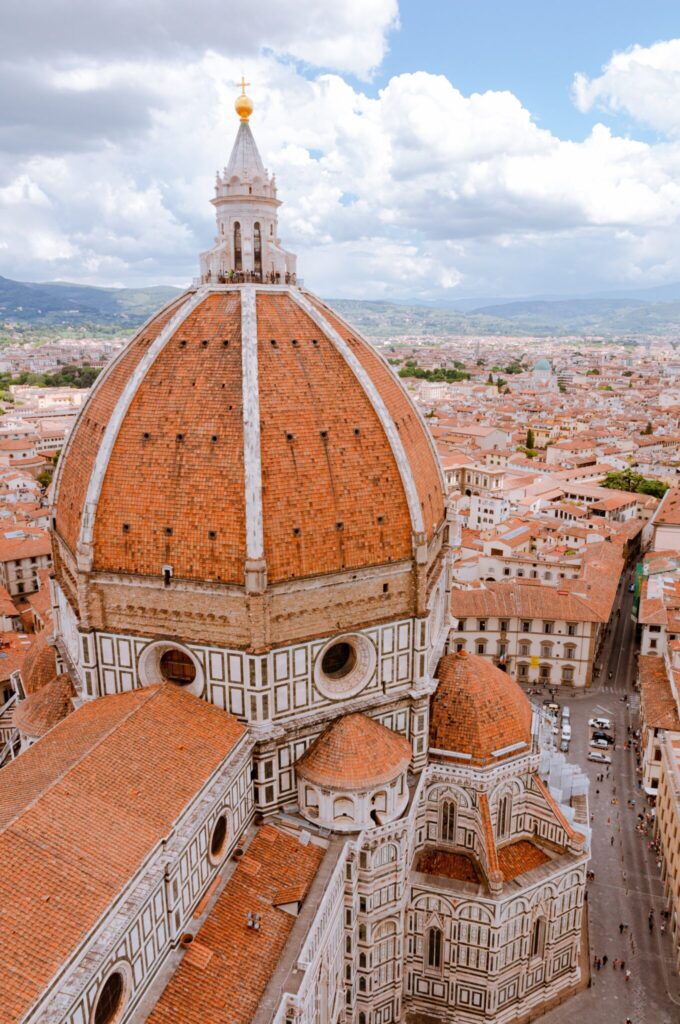
Florence is one of Italy’s best-known cities, famous as the center of the Renaissance. The architectural and artistic points of view create a fascinating atmosphere rising out of the Tuscan hills and creating maximum impact as the region’s capital. The streets can resemble a sleepy village at night and erupt with activity around the historic city center during the day with visitors from around the world eager to visit the Uffizi Gallery and Galleria dell’Accademia to view the historic paintings and sculptures crafted between the Middle Ages and High Renaissance, including works like Botticelli’s Brith of Venus and Michelangelo’s David. The city is the former home of the Italian noble family the Medici, along with the host of the famous Cathedral of Santa Maria del Fiore, known locally as the Duomo, and designed by renowned architect Filippo Brunelleschi.
Florence has dozens of churches, each one a masterpiece of architectural design and artistic style. The city has seductive energy derived from fashion, cuisine, and street markets. The city is considered the “Cradle of the Renaissance,” and has a reputation as being touristy, with 16 million tourists visiting during the day turning Piazza Signoria and Piazza del Duomo into flashpoints for large tour groups and throngs of visitors crowding around the bronze doors of the Gates of Paradise, viewing the Fountain of Neptune, or waiting in line to enter the Uffizi Gallery.
Far beyond the daily crowds, there are countless wonders in the city that keep travelers interested, including the architecture of the old bridge, known as the Ponte Vecchio, and the tombs of Machiavelli and Michelangelo, both located in the Basilica of Santa Croce. The city became the first in Europe to have paved roads, which took place in the 14th century, and claims a history founded by the legions of Giulio Caesar in the 1st century BCE. It is easy to avoid the massive amounts of visitors during the day and fall in love with the narrow, cobblestone streets weaving around the city’s four quarters, divided by among the city’s most important churches: Santa Maria Novella, San Giovanni, Santa Croce, and Santo Spirit.
Avoid the Major Pitfall of Florence
The biggest issue for many visitors to Florence is spending too much time waiting in line and not enough time visiting the famous sites of the city during their tight schedule. Florence is much smaller than Rome but deserves the same amount of consideration due to the enormity of the cultural history on display in the museums, churches, palaces, and the streets. The heart of the city has a timeless charm, accounting for the influx of tourists to the historic center daily.
There is much more to the city than just the Uffizi Gallery and the Galleria dell’Accademia. If you get stuck waiting in line for the most popular art museums, you will miss the pleasures of daily life, from aperitivo to enjoying the birthplace of gelato. Shops fill former medieval palaces and leather merchants continue the traditions of their families around the San Lorenzo market.
Whether visiting Italy for the first time or the 15th time, if you’re stopping in Florence, the city deserves at least three days. This allows you to take your time in the galleries and not feel rushed seeing select pieces by the most famous Italian artists in a crowd of tourists also attempting to see too much too quickly. Take your time in Florence and allow yourself to enjoy the hidden beauty of the Renaissance and the city passed through at a breakneck pace. Discover new artists previously unknown to you, find monks performing Gregorian chants at dusk, or discover a meal in the comfortable ambiance of a local restaurant unattended by large tour groups. Your time, especially when limited during an Italy Workation, is valuable. Make the most of it by avoiding the lines, the congestion, and the rushed pace.
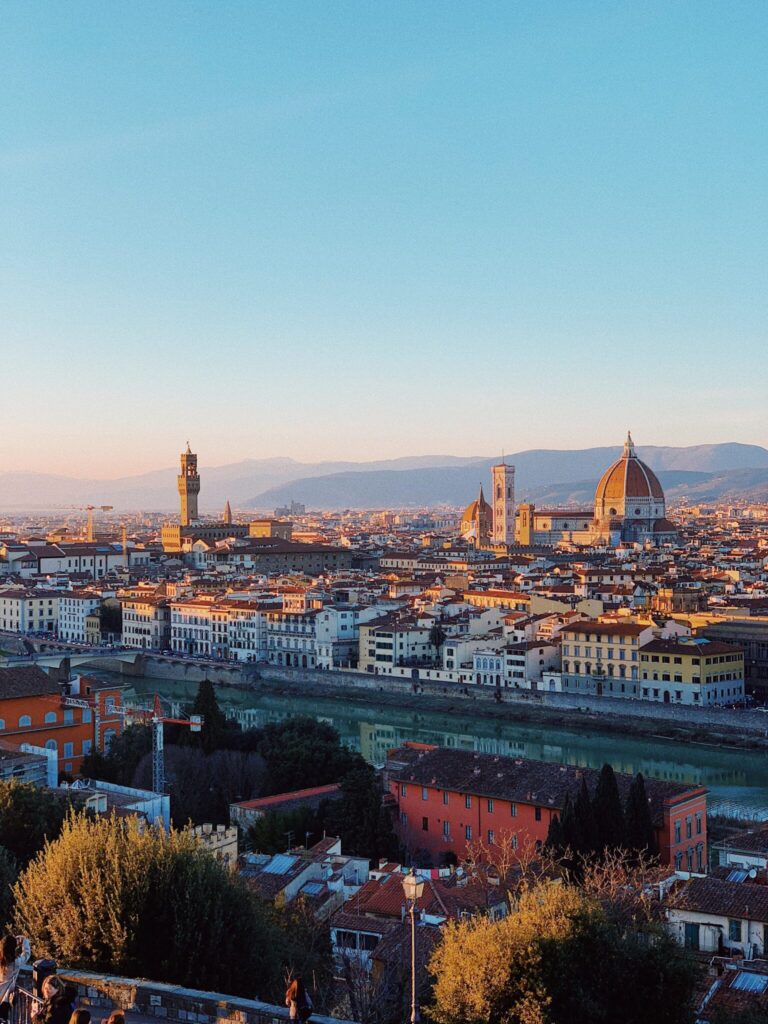
Venice
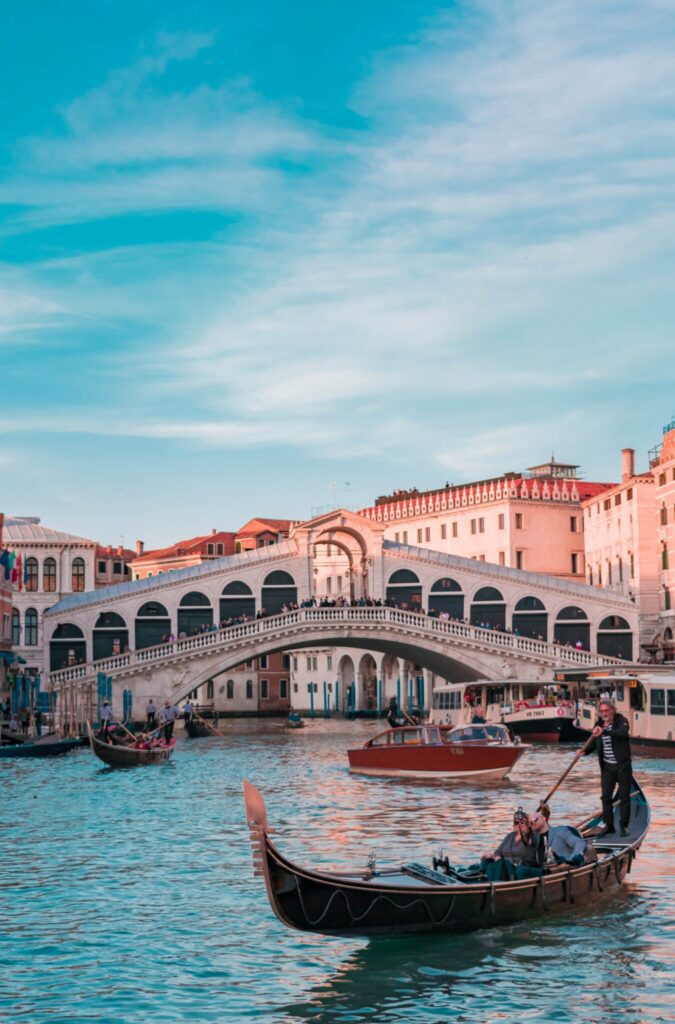
Venice is an inspiring city for romantics and art enthusiasts, engineers and amateur historians. The city lacks any means of foundational support, yet showcases marvels of industrial ingenuity in a manmade environment with lavish mansions sprouting from the lagoon. Eccentric and elegant palaces symbolize the decadence of the former republic, which has turned to charming decay. Plaster peels from the walls and ceilings, seaweed drapes stairs leading into the canals representing beauty, decline, and an original emergence from the sea rooting the city to one of its many nicknames, “The Floating City.”
Venice established its wealth on its connection to the water, trading with the East and expanding across the Adriatic Sea. The car-free streets offer a utopia for pedestrians, rewarding explorers with a maze of streets spanning the 118 different islands that create the single city of Venice. Crowds overtake the famous highlights during the day, flocking to the Rialto Bridge and Piazza San Marco to view the churches and museums. At night, Venice calms practically turning into a different city with quieter streets demonstrating local passions lit by soft lamps hovering above the streets and canals.
The signs of decay disappear in the gentle light and the masses of gondolas throughout the day fade to a sporadic few ferrying guests around the narrower, hidden canals. Wandering through the remarkable city provides a sensational ambiance no matter the sestieri, the six neighborhoods of the city. The most popular sites revolve around Piazza San Marco and the Grand Canal but also reach over the bridges and across the water to the close-knit islets and nearby islands of Lido, Murano, Burano, and Torcello.
Venice sees around 25 million tourists each year, many of whom disembark cruise ships for the day before returning by the evening. The influx of day-trippers to the city has sparked confrontations between the residents, local government, and the tourist board. The city hosts treasures beyond the Doge’s Palace and the Basilica of San Marco, including the impressive artwork inside the galleries of the Scuola Grande di San Rocco, where the artist Tintoretto decorated the walls and ceilings. The Fine Arts Museum hosts a comprehensive collection of Venetian paintings crafted between the 15th and 18th centuries.
Avoid the Major Pitfall of Venice
Day-trippers account for a large majority of the 16 million people visiting the floating city each year. Travelers to Venice typically make the same mistakes as when touring Rome, Florence, or Italy as a whole; they spend too much time traveling and not enough experiencing.
To view Venice properly, you should spend a minimum of two days inside the city to get acquainted with the destination and bypass wasting time and money on transport instead of attractions. Staying in Venice is about timing and location, the latter of which allows you to take your time walking the famous footbridges rather than spend it on a crowded platform waiting to take a water taxi. With the exception of Piazza San Marco and the Rialto Bridge during the day, crowds in Venice are avoidable.
For your Italy Workation, you must visit St. Mark’s Basilica and the Doge’s Palace, but should spend the remainder of your time beyond the obvious tourist destinations, moving away from the crowds rather than of following them. The city offers a majestic ambiance that draws visitors to its shores time and time again, eager to revisit one of the art museums or wander along the halls of the Arsenal and the Museum of Naval History or relax with cicchetti, Venetian traditional snacks often served at a local wine bar.
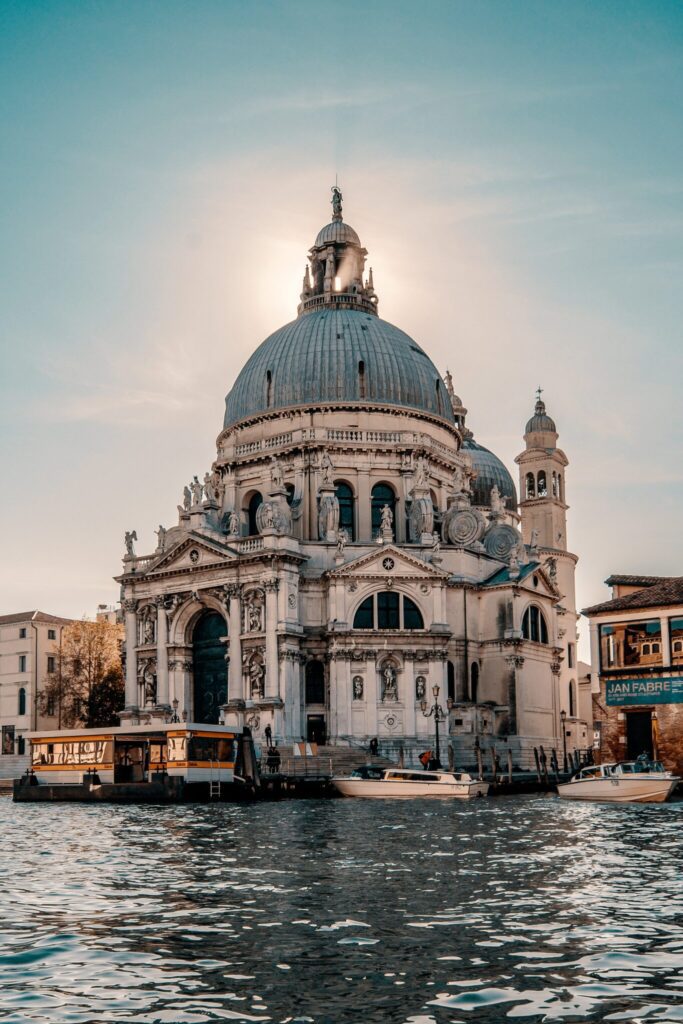

Cinque Terre
What once was a collection of sleepy coastal towns on the Tyrrhenian Sea in Liguria has become one of the most popular destinations in the country. Few places in Italy provide the type of charm seen on the rocky shoreline, around the secluded pebbled beaches, among the tower homes, or around the open vistas. The five towns of Riomaggiore, Manarola, Corniglia, Vernazza, and Monterosso lack important artwork, lavish palaces, grand museums, and exuberant cathedrals but have an abundance of natural beauty and regional charm.
he government didn’t build a road to the towns until the 1960s, allowing the influx of tourism to pass over the towns reached by boat or old shepherd’s trails along the rugged coastline. The paths remain a popular tourist draw due to their fabulous views over the water, terraced gardens, and thriving orchards.
Locals do own cars but the village-like streets remain pedestrian-friendly, with parking lots on the outskirts of the town centers for those living or staying in one of the five towns. The isolated six-mile stretch of coastline has brought a large influx of tourists over the past 20 years, turning the once-hidden gem of Liguria into a hive of human activity during the day drawn to the sun, sea, wine, basil, and beaches.
The history of the region dates back to prehistoric times. Archeologists have discovered bones and primitive tools in local caves. The Romans occupied the region after many bloody battles with the settled citizens of the region, already hardened by conflicts from invaders along the Mediterranean Sea. The Byzantine navy, Lombard army, and Saracen pirates all attempted to conquer the stretch of shoreline. The five towns retain their rich culture and deep-rooted history through the throngs of visitors exploring the towns and trails, exemplifying the true brilliance of Cinque Terre’s surroundings.
Avoid the Major Pitfalls of Cinque Terre
The name Cinque Terre creates confusion among non-Italian speakers but during your Workation, you can understand Cinque Terre is not a single town but a collection of five coastal villages. The second common mistake people make when visiting the area is they overestimate the distance between the five towns, thinking they must pack their bags and travel to different towns each night to experience the local culture. The third and most common mistake people make when visiting the Cinque Terre is they don’t stay long enough.
It has become common with travelers staying in Florence or Pisa to take the train early in the morning, visit three if not five of the towns, and return to their cities for the evening. There is a particular majesty to each of the five towns that day-trippers lose by not discovering the serene nights and tranquil early mornings before the large groups roll through during peak season. Taking your time exploring Cinque Terre offers a better experience consistent with the local relaxed pace of life.
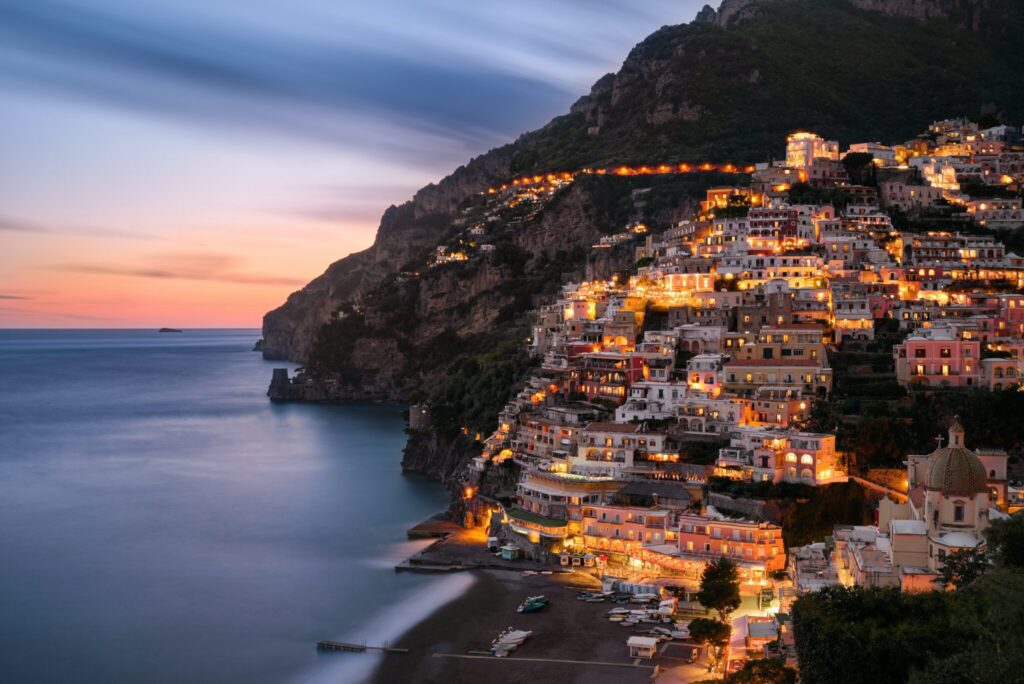
Amalfi Coast
Natural beauty, rich history, and a unique architectural aesthetic have made the Amalfi Coast one of the most famous roadways in the world, known as the most beautiful stretch of coastline in Italy. The road reaches a total of 25 miles long and winds around the protruding mountains that dip into the Tyrrhenian Sea and twist around deep ravines. The ridges provide spectacular views of the shores, hidden gardens, and thriving orchards, while the curves along the roadway connect to enchanting towns and exceptional beaches.
The narrow road along the sheer edges above the sea scares away drivers from abroad with locals traveling at speeds in cars, vespas, and buses that feel awesome. Walking paths and stone stairways travel the forests, lemon groves, and wildflowers decorating the upper ridges of the coastal mountains. Tiny villages hidden from the crowds along the coastline are interspersed throughout the trails. The area connecting Positano in the west with Salerno in the east has gained the reputation of one of Italy’s “Must-See” destinations.
The region is picturesque and, at times, maddeningly crowded. The majestic skyline blends with the iridescent turquoise Tyrrhenian Sea and 30 historic defensive towers have protected the scattered coastal villages from the threat of pirates from the 9th up until the 17th century. The ruins of a Roman villa add to the luster of the region, accentuated by the grand churches connoting the former prestige of the Amalfi navy. Each town offers something unique to the culture and experience of the coastline during your Italy Workation.
Avoid the Major Pitfalls of the Amalfi Coast
The Amalfi Coast has been popular with travelers since the times of the Roman empire. The region is no stranger to tourists eager to relax in the comforts of the Mediterranean sun, find the smells of citrus trees, and observe the panoramas of the Tyrrhenian Sea. Like any popular destination around the world, notoriety brings high prices to mediocre places, an abundance of souvenir shops, and buses crammed with people. The region is popular because of its beauty, both natural and manmade, from the seaside to the pastel and ceramic-tiled homes, the seductive flavor of limoncello and the proximity to archeological sites such as Pompeii and Paestum. The most common pitfalls people fall into when visiting the Amalfi Coast are following the crowd and spending more money on mediocre cuisine instead of less money on local delicacies.
When traveling to the Amalfi Coast there are more places to stay than the well-known towns of Sorrento, Positano, or Amalfi Town. Staying in one of the other locations on the coast provides a more authentic experience while remaining convenient to travel along the coastline. A great, accessible option is Vietri sul Mare, one of the few towns on the coast with its own train station, allowing visitors to travel freely between the town and Naples, or also Pompeii.
Traveling around the roads of Amalfi is a consistent pain when trying to explore the various towns at your own leisure. The narrow road prevents even the most daring visitor from wanting to drive, while the buses grow crowded during the high season. The towns sit on the shoreline and specialize in seafood, providing delicious rustic options connected to the historic culinary traditions with courses refined by established chefs for more prestigious clients. Stay away from quick-service eateries and restaurants or cafes inside the crowded piazzas. Instead, find where the locals go and sample the dishes for which the region or town is known. This includes dishes containing squid, octopus, or muscles, restaurants providing glasses of the regional digestivo, limoncello, and Neapolitan pizza.
Lake Como
Lake Como is a region of dreamy beauty situated in the Italian Alps near the border of Switzerland for a different perspective during your Italy Workation package. The name conjures images of elaborate, elegant meals and shores dusted with a light mist. Small sailboats glide over the shiny surface of the water for one of the world’s most glamorous lake districts surrounded by dramatic mountain peaks. Villas and villages ring the lakeshores amidst the hills, mountains, and sporadic islands. A funicular travels between the town of Como and the upper village of Brunate.
Unlike the surrounding villages on the lake, Como Town accounts for one of the largest residential principalities in the region, with approximately 85,000 residents. The streets feel serene and the lakeside promenade offers a touch of tranquility amidst the 12th-century historic center, feeling more like a village than a city. The 14th-century cathedral crowns the main piazza with an impressive brick gothic façade and elegant rose window. The cafes in Como and the surrounding villages maintain the quintessential European feel.
The 12th-century city wall creates the air of a fairytale and the stoic shoreline offers wonderful vistas of the fantastical villas. One of the best ways to experience Lake Como is in the village of Brunate. The funicular provides a sensational view. A quick and easy stroll through the village leads to the Faro Voltiano Lighthouse. With only 1,800 residents, the town is the perfect place to enjoy the gorgeous scenery, culture, and quiet mountain atmosphere.
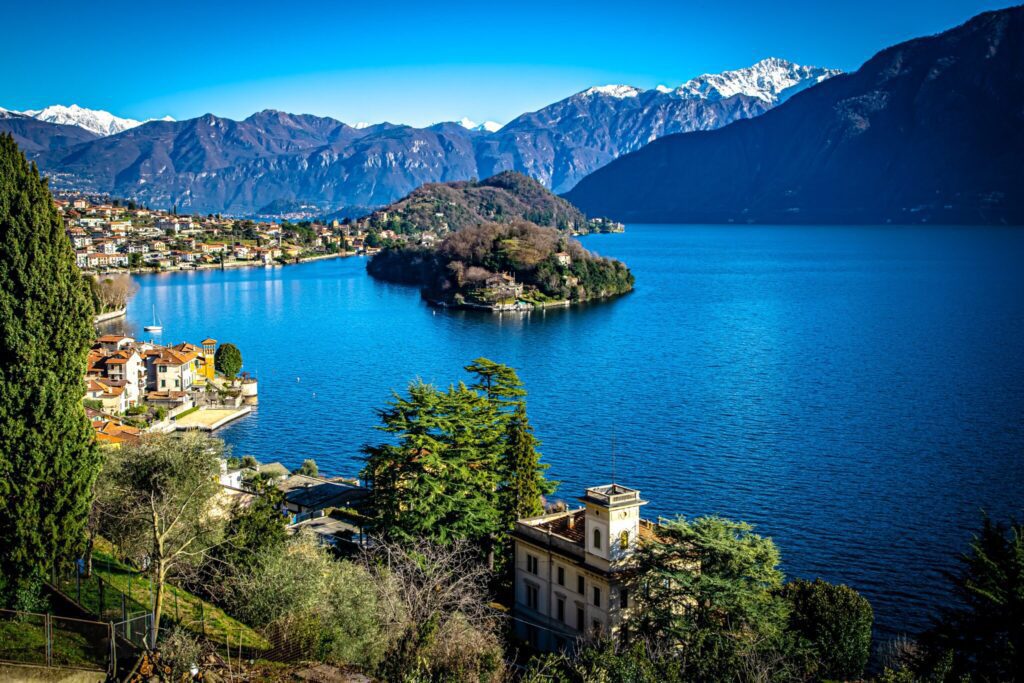
Avoid the Pitfalls of Lake Como
Do not underestimate the size of Lake Como. The town itself can feel small and sleepy but the lake for which the town is named, is giant, without a train circling the 56-square-mile perimeter. It is not essential, nor is it recommended to have a car when staying in the center of Como but keep in mind, a car is helpful for a day or two if you wish to visit neighboring towns or travel around the lake by means other than a boat.
Ferries are present and easy to access but are not frequent. This limits your travel options, in addition to the fact a ferry must travel directly to another marina, once again limiting your choices when you consider the overall lack of public transportation in and the town. While visiting, do not skip Bellagio thinking it may be similar to the Las Vegas hotel. Instead, visit and explore the glitz of the small town on the shoreline that can feel like it glows during Italy’s summer months.
Capri
The island of Capri, located off the Amalfi Coast in the Tyrrhenian Sea, is a unique destination bedecked in lavish sunsets over the ocean, enchanting mountains in view of the coastline, and the rumors of an ethereal glow inside the Blue Grotto. Many visitors venture to the town of Capri to walk among the glitzy shops and maze of cobblestone streets or take a boat directly to the Blue Grotto to watch the fascinating shimmer of the water. The town of Anacapri provides a comfortable, quiet ambiance capturing the hope of escaping to a secluded Mediterranean island.
Viewing the water from anywhere on the island holds the same crystal clear and shimmering blue. Leather shops present purses, bags, and sandals in their windows beside glamorous boutiques. The crowds dissipate by the late afternoon when the refreshing sea breeze blows through the streets. The street lights reflect off the whitewashed walls of the shops and offer a soft, comforting spark in the public piazzas decorated with restaurant tables opening from the narrow alleyways.
During the day boats traverse the colorful waters mainly around the rocky outcropping reaching nearly 2,000 feet above sea level and the Faraglioni sea stacks. Rosemary and sage grow wild in the mountains and countryside outside of town and Roman ruins continue to decorate the landscape with masterful architectural works once belonging to emperors Augustus and Tiberius.

Avoid the Pitfalls of Capri
Given Capri is an island with access limited to the ferry schedule or a private boat, don’t miss the scheduled ferries back to the mainland. This may seem like a simple and obvious pitfall but it is surprising how many people believe the ferries are always late or that a public mode of transportation will wait for them, but it won’t, because it doesn’t need to.
More than just being on time for the ferries, other modes of public transportation on the island include public buses and tour buses but these aren’t necessary for getting around and can, actually, be a detriment to experience. Walking the Capri Town and Anacapri can give you endless chances for panoramic views, visiting provincial houses, and seeing the island’s unique foliage. It also gives you the opportunity to escape the crowds, especially in summer.
Verona
There are few better places for a Workation in Italy than the city of Verona, home of Shakespeare’s Romeo and Juliet, and so much more. The city has an atmosphere in the evening with dim lights and cozy alleyways embracing the spell the star-crossed lovers placed on the streets nearly five centuries ago. Views to the surrounding hills and banks of the Adige River accentuate the dreamy environment.
The heroine of Shakespeare’s story has become a patron of love over the centuries with visitors from around the world excited to stand in the courtyard related to the ill-fated lover and stand on the balcony crafted to reflect the famous scene during which Juliet asks for her Romeo. A bronze statue adorns the courtyard. She remains popular around the world with people writing letters to Juliet asking for advice on their relationship woes.
Pozzo dell’Amore, the Lovers’ Well, is a well-kept secret of the city and the Garden of the Giusti Palace adds to the serene atmosphere of the city with late Renaissance charms of grand fountains and thriving flowers. The garden is home to one of the oldest hedge mazes in Europe, a great place to get lost for a while after a day of work. For a touch of the unique and unforgettable, the Verona Opera Festival takes place each summer inside the Roman amphitheater, drawing music fans from around the globe inside the ancient construction nearly 2,000 years old millennia old.

Avoid the Pitfalls of Verona
Verona isn’t your typical Italian city overrun with tourists but the main attractions, especially Juliet’s home, can see large numbers of foot traffic in short bursts, mainly when connected to tour groups passing through when traveling to or from Venice.
For your best experience in Verona, keep away from the crowds and take your time writing a letter to Juliet. The kitsch activity has been taking place for centuries but it’s important to write on a piece of paper and place your letter in the tunnel or addressed to Juliet Capulet, rather than writing your name, letter, phone number, or otherwise on the walls.
Pienza
The small Tuscan town of Pienza provides magnificent wonders of architecture and landscape in one of Italy’s most popular regions without the massive crowds during your Italy Workation. Cities such as Florence, Pisa, Lucca, and Siena have taken all the recognition over the years, but Pienza offers a peaceful alternative to the bustling, congested streets of many Tuscan towns. The gorgeous Renaissance architecture dates back to the 15th century when Pope Pius II commissioned the reconstruction of his childhood hometown, including designing a perfect town square.
The Unesco World Heritage status protects the enchanting architecture and culture embodying the ideal renaissance city built according to antique theories meant to impact the human soul and stimulate wellbeing. The medieval walls wrap around the edges of town and offer fantastic views of the famous Tuscan landscape around the surrounding Val d’Orcia.
The hilltop Tuscan town is also a paradise for epicureans who flock to the Val d’Orcia for samples of great cheeses and rich wines. Pienza’s beauty has inspired poets, writers, and artists for centuries, easily seducing newcomers with narrow cobblestone streets, succulent smells, and great panoramas.
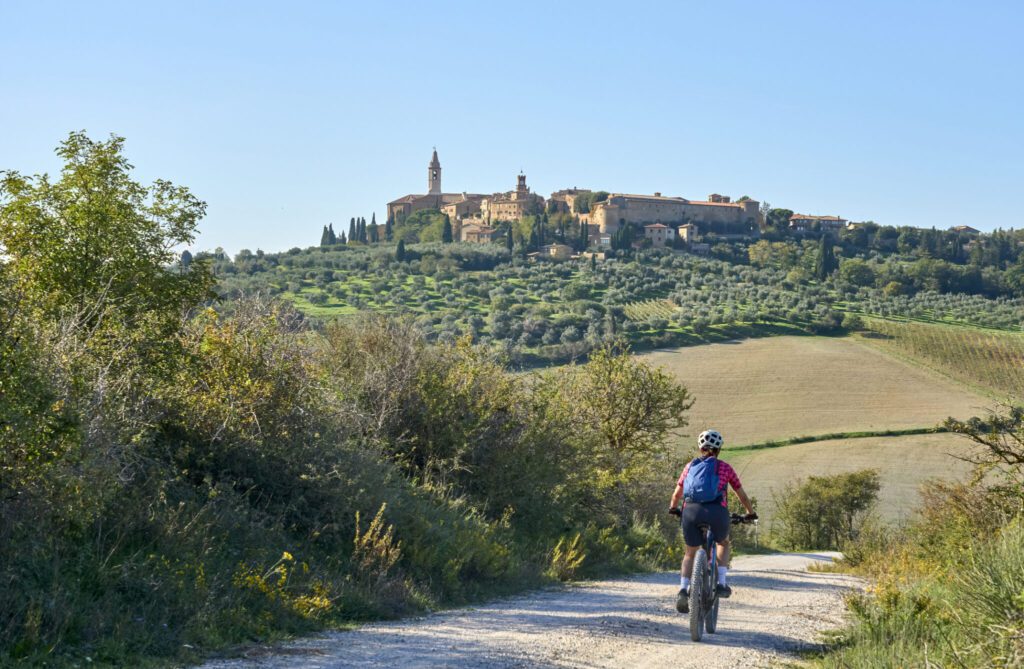
Avoid the Pitfalls of Pienza
Pienza can feel more like an ideal than a town, capturing the spirit of the Renaissance in its intricate design. Overshadowed by more famous and central Tuscany cities like Florence, Siena, and Pisa, Pienza still receives a fair number of visitors each year, especially during Italy’s summer months. Normally these crowds are day-trippers and often part of larger tour groups but by avoiding the streets in the early to mid-afternoon, you can typically enjoy the quieter pace, lovely lifestyle, and gorgeous architecture away from the swarm of travelers who expand and shrink with equal speed and vigor throughout the day.
Aside from avoiding the crowds, do not miss eating Pienza’s local dishes and ingredients. The town is famous for its pecorino cheese made from sheep’s milk. Eating in Italy is one of a visitor’s favorite past times but too often they get caught in what they think they should be eating rather than what they actually should try. Pienza’s pecorino cheese is quality, with a delicate flavor of nuttiness and possible crumbly texture.
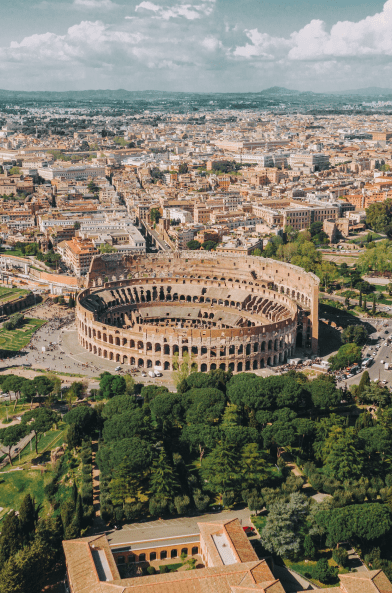
Find the Right Region to Visit During Your Workation
Italy’s northern, central, and southern sections share unique properties but also demonstrate their historical and cultural differences. Growing from Roman colonies to city-states, cities colonized by world empires to a united Italian Kingdom, and eventually a Republic, each Northern, Central, and Southern Italy each tell their own story connected to, and separate from, the shared history and heritage of the country.
Choosing your ideal destination in Italy could focus on the beaches of the south, the mountain towns of the north, or the vineyards scattered across the legendary landscape of the central rolling hills. Italy is always a great place to visit and understanding what you like to do and see during your Italy Workation package can guide your overall experience.
Find more information on where to visit and what to do before you speak with Workation to plan your visit to Italy. We help maximize your productivity by enhancing your work-life balance. Take one step closer to planning your Workation or find more information on whether to visit Cinque Terre or the Amalfi Coast for your Workation.

